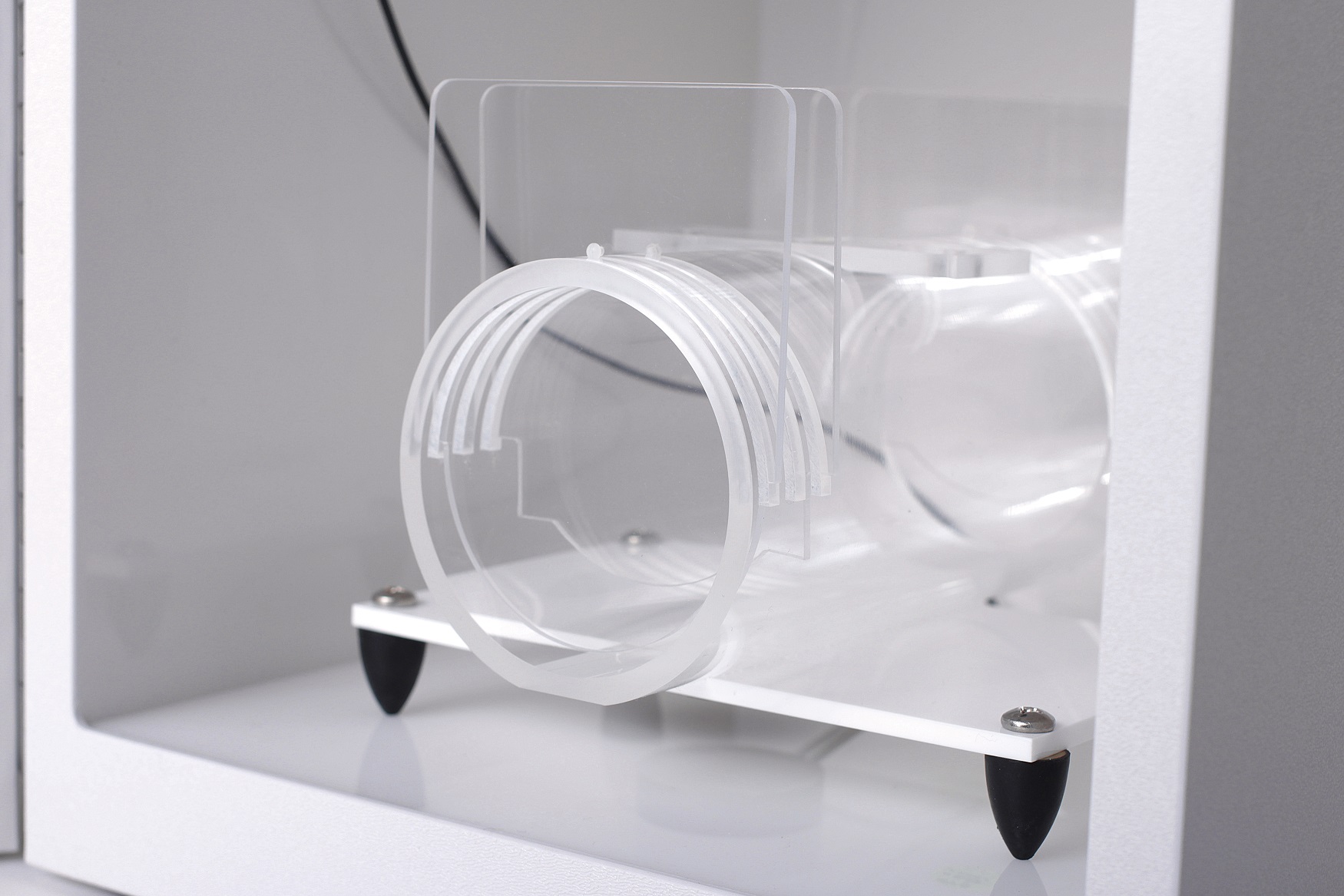The acoustic startle response is an unconditional reflex that involves quick movements of facial and skeletal muscles in response to sudden, startling stimuli such as light or noise. In mice, monitoring acoustic startle response is crucial to understanding more about the central nervous system (CNS) and includes classical conditioning, fear, habituation, and sensorimotor gating. To quantify this response, researchers use a startle chamber to trigger a stimulus and monitor the mouse’s anxiety, fear, and stress levels. In this blog post, we examine how acoustic startle response in mice is quantified and why this is important.
Experimental setup
Scientists need several apparatus and equipment to accurately and efficiently monitor acoustic startle response in mice. One of the challenges with quantifying acoustic startle response is that it happens extremely quickly, giving researchers little time to capture the response. With this setup, the mice used as test subjects can be monitored closely for safety reasons and to ensure the experiment results are accurate.

Startle Chamber
The mouse is placed inside a restraint inside a startle chamber, so it is in a confined and safe space. Startle chambers are fitted with speakers, as a loud noise is used as a stimulus, and a transducer to measure the response.
Acclimation period
Before any tests occur, the mouse is given a short period to acclimate and become familiar with the startle chamber. Allowing an acclimation period reduces the chance of inaccurate results, as mice should only respond to the stimuli, not parts of the chamber.
Presentation of Acoustic Stimuli
Once the acclimation period is over, a set of acoustic stimuli are triggered over various intervals. Gradually, the sound intensity is increased so researchers can gauge the point that initiates a startle response.
Measurement of Startle Response and Pre-Pulse Inhibition
During this stage, researchers might measure the pre-pulse inhibition (PPI) of the startle response, another feature crucial for understanding the CNS. PPI often happens in response to a quieter sound before the startle-inducing noise and can often reduce the intensity of the startle response. A startle response can be exhibited through rapid contraction of facial and skeletal muscles, which can look like an entire body flinch, the extension of forepaws and hind paws followed by a hunched position, and a change in facial expression or eyeblinks.
Once these steps have been taken, researchers can analyze the data collected from the experiment.
Analysis of Data
Analyzing the data from startle response experiments typically requires specialized software. The software will generate reports based on the startle response and prepulse inhibition (PPI) data for each mouse or each testing group. Once the data has been analyzed and presented, researchers can use this information to compare results between different mice or testing groups. This is often conducted when one group has a genetic modification or is treated with specific drugs and compared with a different group.
Quantifying Acoustic Startle Response with San Diego Instruments
San Diego Instruments offers a range of products that can be used to monitor and measure acoustic startle response in mice. Our SR-LAB acoustic startle response system is widely used to quantify acoustic startle response, PPI, and fear-potentiated startle (FPS) in research settings.
The SR-LAB system is a comprehensive hardware and software solution that can be used with various startle response applications, with the option to add up to 16 stations for high throughput experiments. The SR-LAB software offers control of multiple stimuli such as air puffs, lights, noise bursts, foot shocks, and background noise, and various test paradigms can be initiated without the need for extra software.
Contact a member of SDI today to learn more about quantifying acoustic startle response.